- 139 views
Chaklang: The Ahom Wedding
Chaklang, also known as Cak-lang or Soklong is the traditional marriage ritual of the Ahom community in Assam. Its origins can be traced back to 558 A.D., as documented in a Tai-Ahom manuscript titled Lai-lit-Nang-hun-pha. Conducted by the Ahom priests, the chants and prayers of the ritual have been preserved and transmitted orally through generations. It is believed that the first Chaklang ceremony took place when the Ahom god, Pha-nu-ru Langdon, expressed a desire to marry Nang-hun-pha, the daughter of a priest named Ak-kai Mohung. To formalise his intentions, he sent a messenger, Mo-lau-khri, bearing ceremonial gifts for the bride. These gifts, comprising betel leaves and areca nuts, were arranged on Sarai platters with stands and wrapped in handmade red towels. Following this, the bride’s parents conducted the ghor sawoni ritual, a formal visit to the groom’s home, which signified the beginning of the marriage proceedings.
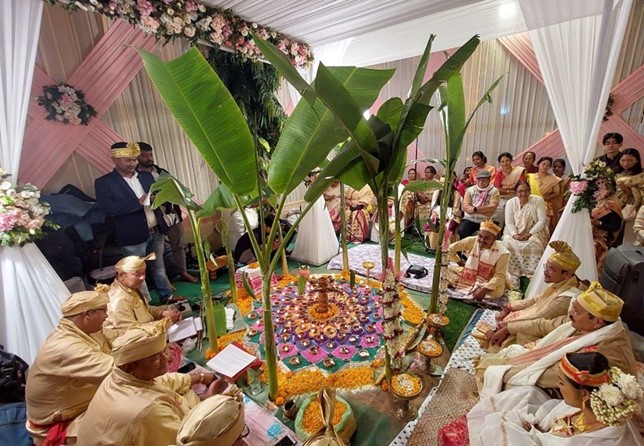
Chaklang Ceremony.
Image Source: Deepshikha Gogoi and Gaurav Kumar Das
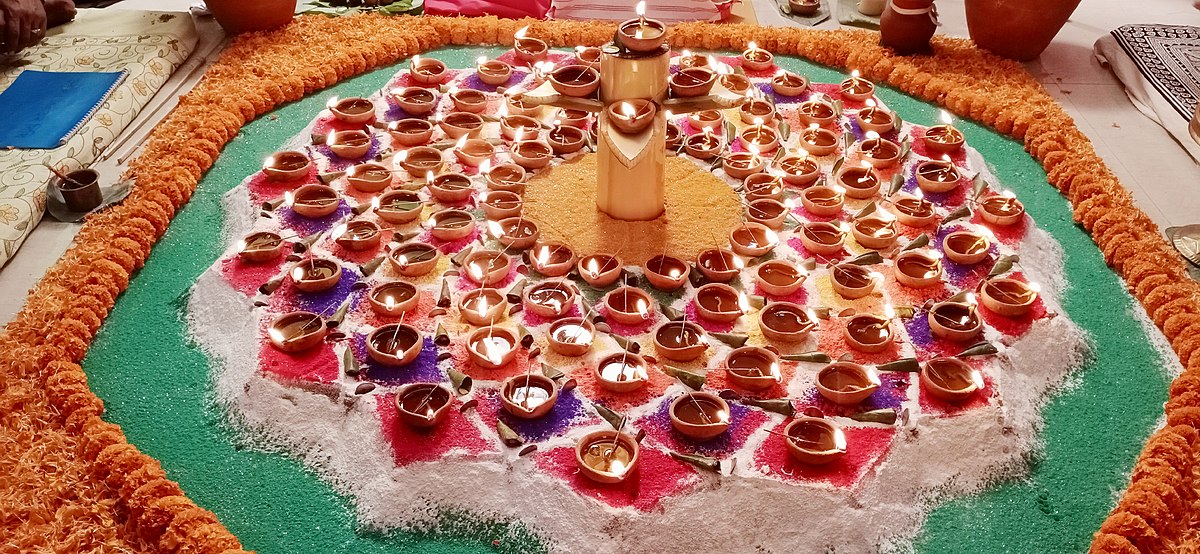
The maral along with the 101 earthen lamps.
Image Source: Wikimedia Commons
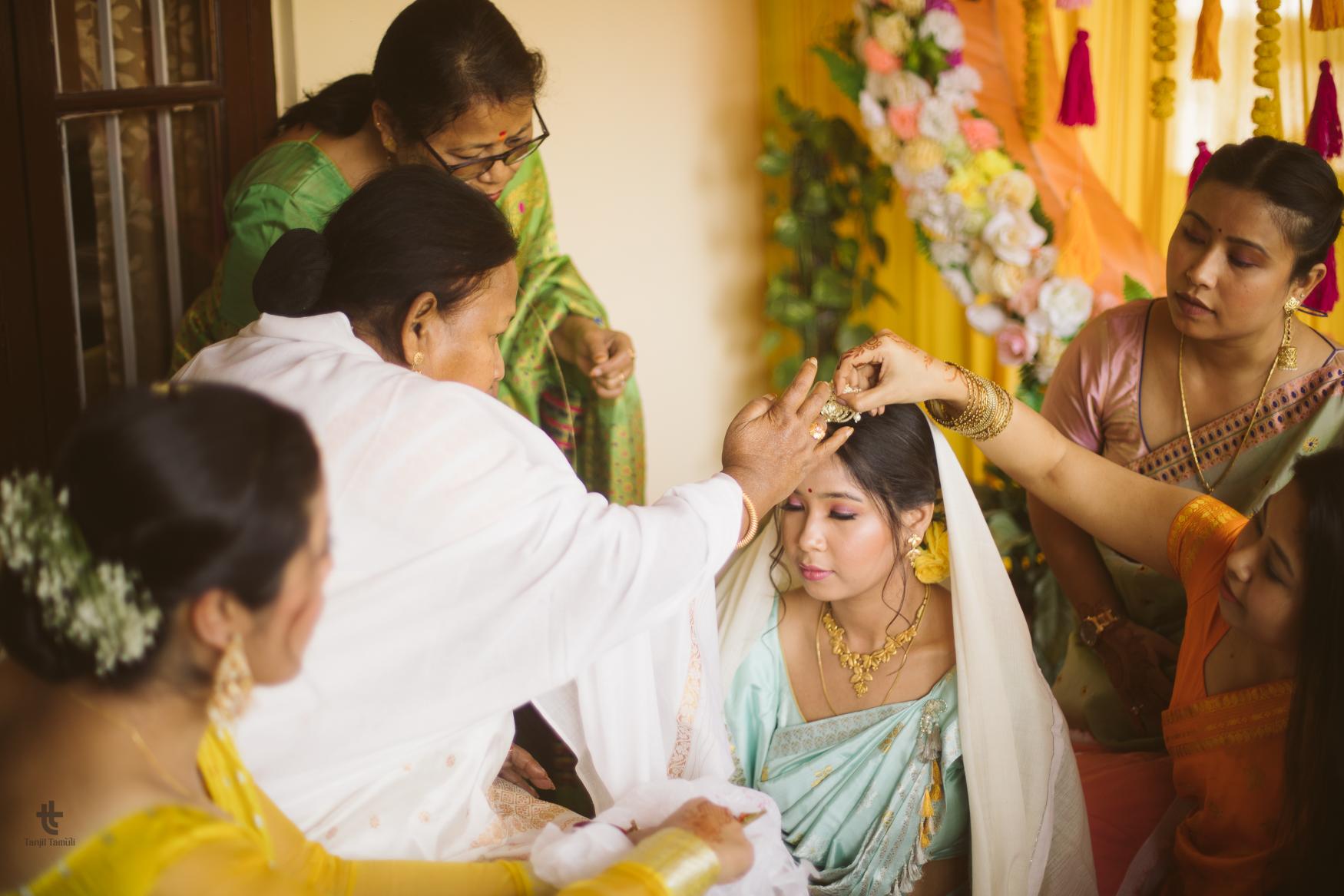
Groom’s mother applying vermillion on the bride’s head.
Image Source: Tanjil Tamuli
Traditionally, the ceremony spanned nine days, but over time it was reduced to seven, then five, and now it is celebrated over three days. The first day, known as Juron, involves the groom's family presenting the bride with her wedding attire, jewellery, and vermillion at her home. They also bring two earthen pots filled with rice, each adorned with cotton yarn and a mango twig featuring five leaves, along with a bathing paste made from black gram and turmeric. The bride touches one of the pots and returns some of the paste to the groom, which the couple is required to use on their wedding day.
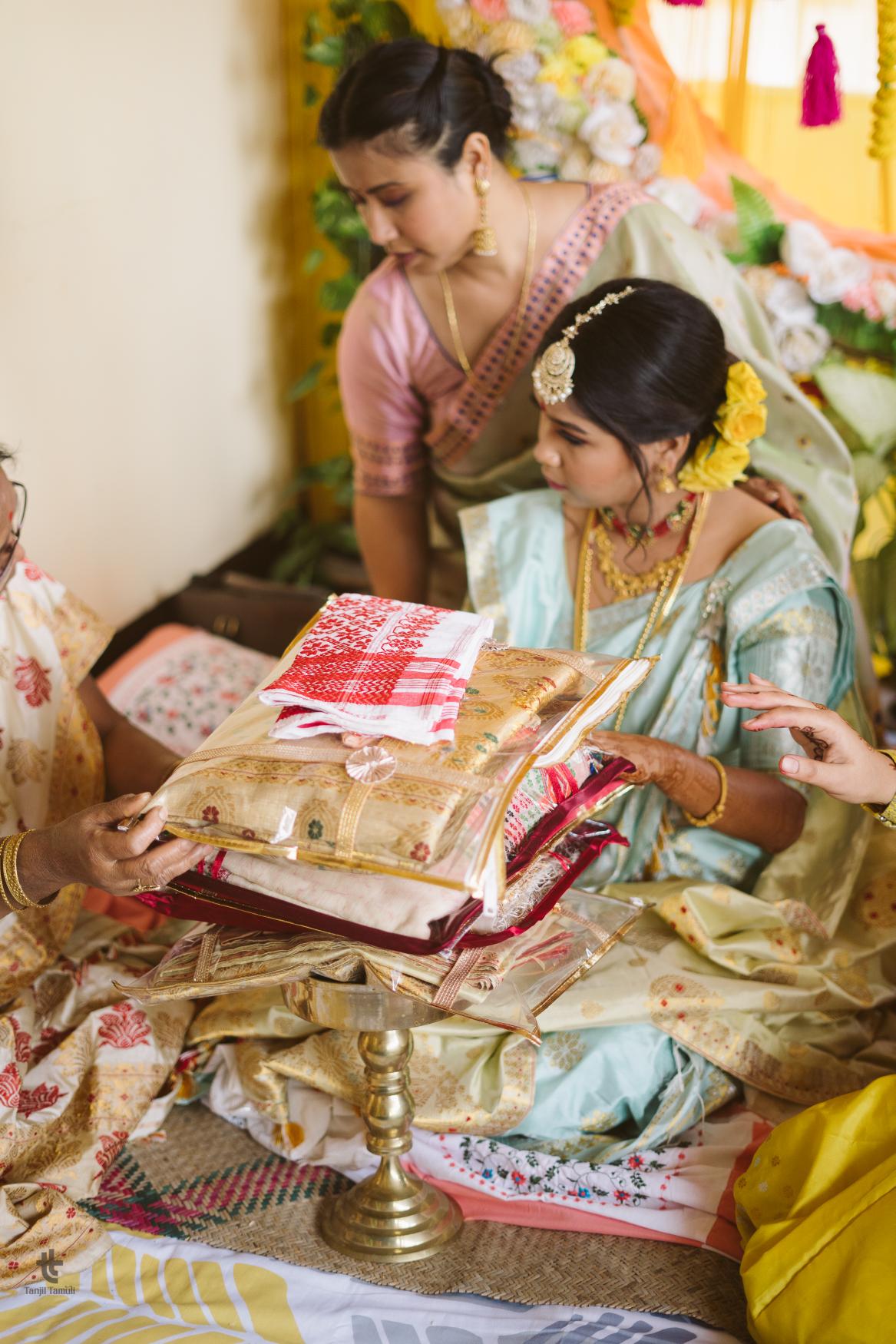
The groom's family presenting the bride with her wedding attire and jewellery on a Sarai.
Image Source: Tanjil Tamuli
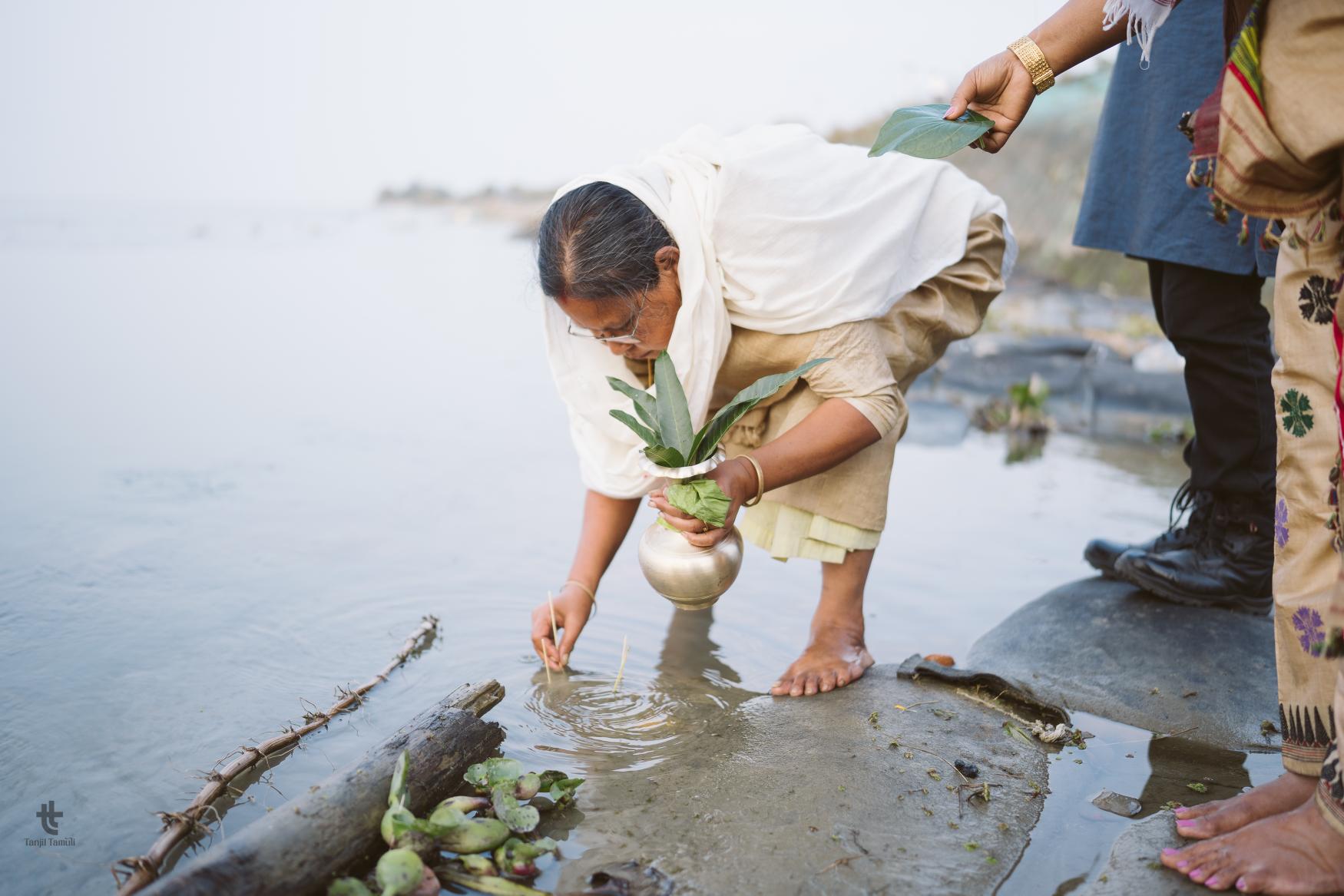
Pani-tola ritual.
Image Source: Tanjil Tamuli
On the second day, known as Deobaan, a ritual is performed at both the bride’s and groom’s houses to ensure a prosperous future for the couple. Prayers are offered to Ahom gods, particularly God Langkuri, as well as to family ancestors and priests, using offerings such as betel nut and sacred Singkora flowers.
On the final day, known as Chaklang day, various rituals are performed, beginning with pani tola, a ceremony where the women of the household fetch water from a nearby river or lake. This water is carried back with ritualistic care, accompanied by songs called biya naam. Next, the bathing paste is applied to both the bride and groom, followed by their ceremonial baths, known as koina or dora nuuwa. The bride and the groom bathe within a temporary structure called a bey, constructed from bamboo poles and plantain leaves. Beneath this bey, items such as an egg, a needle, kasi plant, betel nut, and a coin are buried. This ritual symbolizes the cleansing of the bride and groom from impurities or evil spirits, spiritually preparing them for married life.
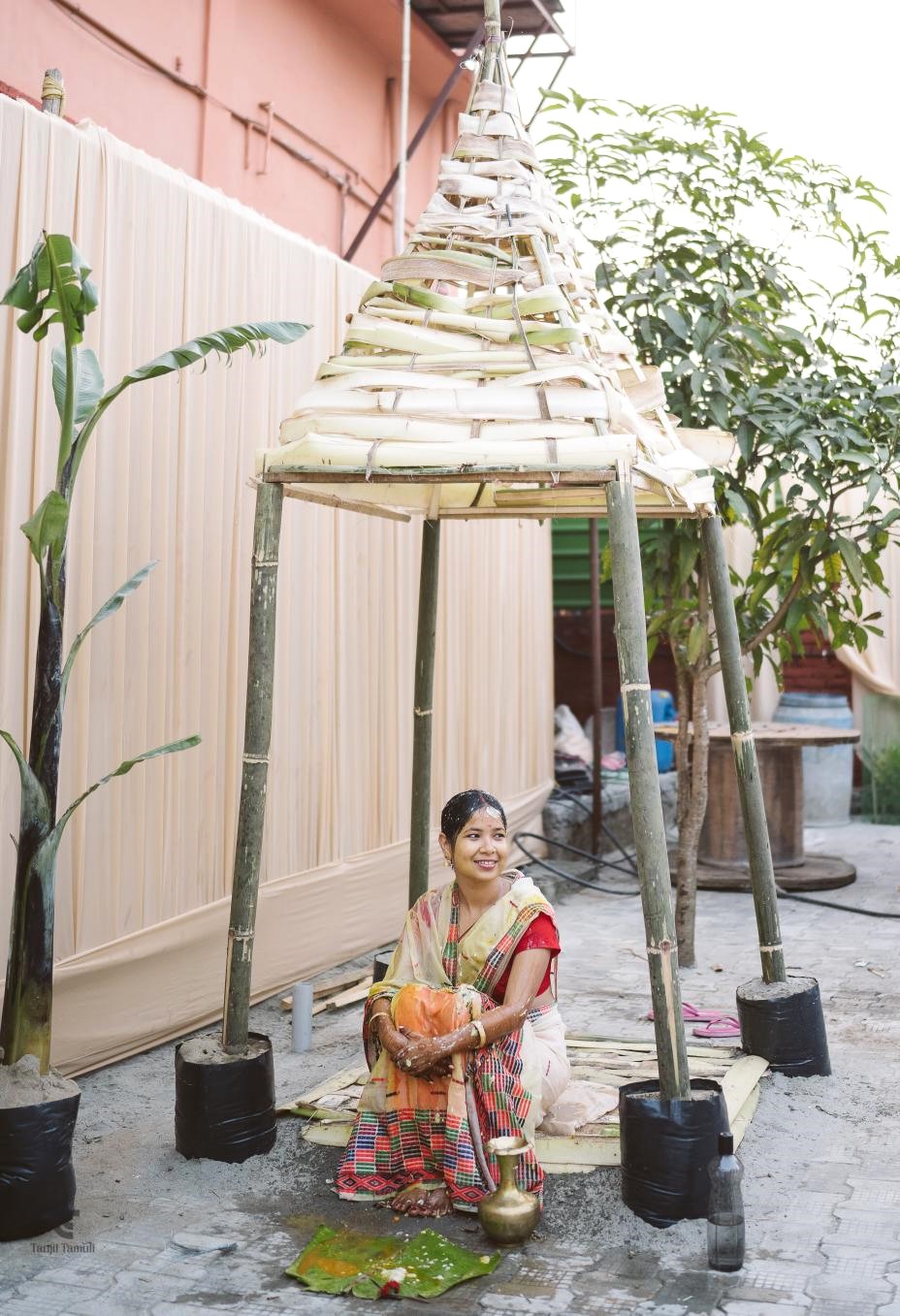
Ritual bath of the bride.
Image Source: Tanjil Tamuli
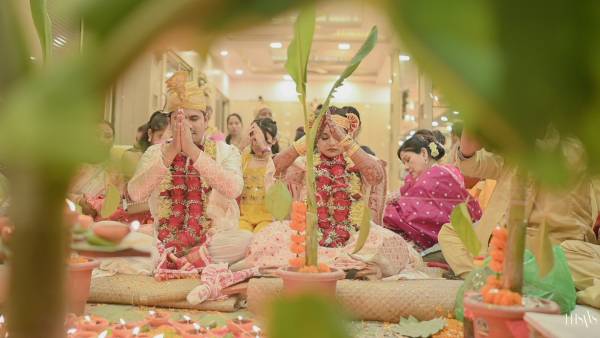
Groom and Bride during the Chaklang ceremony.
Image source: Dhritisha Gogoi
The central focus of the Chaklang ceremony is the maral, an octagonal altar decorated with 101 earthen lamps, considered the most distinctive feature of a Chaklang marriage. The maral is sheltered by four banana plant pillars and arranged in a pattern that is said to symbolize the universe. The eight sides of the maral are believed to represent either the eight cobras that guard the earth or the eight kingdoms conquered by Tai kings, with the central lamp symbolizing God Phra. The couple exchanges their wedding vows in front of the maral, which acts as a witness to their union. They sit beside the altar, with the groom traditionally positioned to the bride’s right. Following this, they are blessed with holy water and panchamrit while priests chant prayers for the successful completion of the ceremony. The bride’s father then presents the groom with a gold ring and performs the ritual of sampradan, placing the bride’s thumb over the groom’s thumb. As the priest chants mantras, the couple’s sadors are tied together in a knot known as logno-gathi.
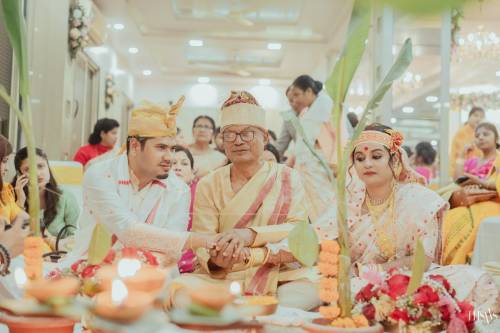
Bride’s father performing the ritual of Sampradan.
Image source: Dhritisha Gogoi
Additionally, the bride gifts the groom a hengdang, a traditional Ahom sword, symbolizing her trust in him to protect their family. In return, the groom vows to shield her from all hardships. The bride also presents a self-woven cloth called ‘kavas-kapor’ to the groom for his protection. On the day of the ceremony, the bride wears an elegant traditional outfit crafted from Muga silk, typically consisting of a Mekhela, Reeha, and headgear. She also enhances her look with traditional jewelleries, including keru and thuria earrings, joonbiri, dugdugi, and golpata for her neck, as well as gaam kharu and bangles for her wrists. The groom’s outfit features a kurta, churia (dhoti), a turban, and a seleng sador, usually made from Muga silk.
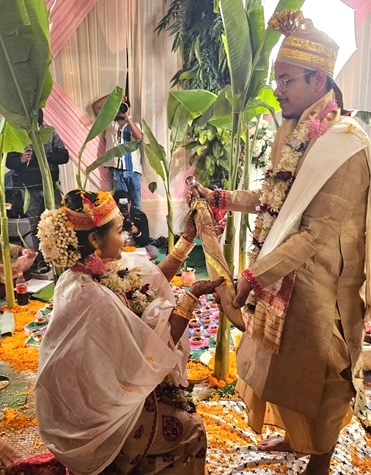
The bride gifting hengdang to the groom.
Image source: Deepsikha Gogoi and Gaurav Kumar Das
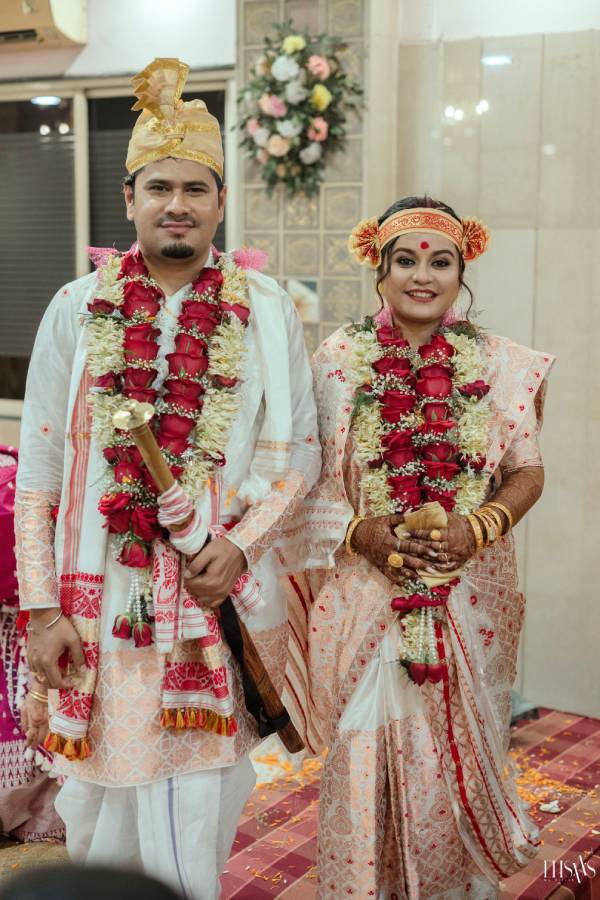
A newlywed couple after performing the Chaklang ritual.
Image source: Dhritisha Gogoi
The Chaklang ritual concludes after all vows and rituals are completed. The priests bless the newlyweds, who then seek blessings from their elders. The three-day ceremony culminates with the bride departing for her new life at the groom’s home.
 Government of India
Government of India

 Recognizing the ongoing need to position itself for the digital future, Indian Culture is an initiative by the Ministry of Culture. A platform that hosts data of cultural relevance from various repositories and institutions all over India.
Recognizing the ongoing need to position itself for the digital future, Indian Culture is an initiative by the Ministry of Culture. A platform that hosts data of cultural relevance from various repositories and institutions all over India.